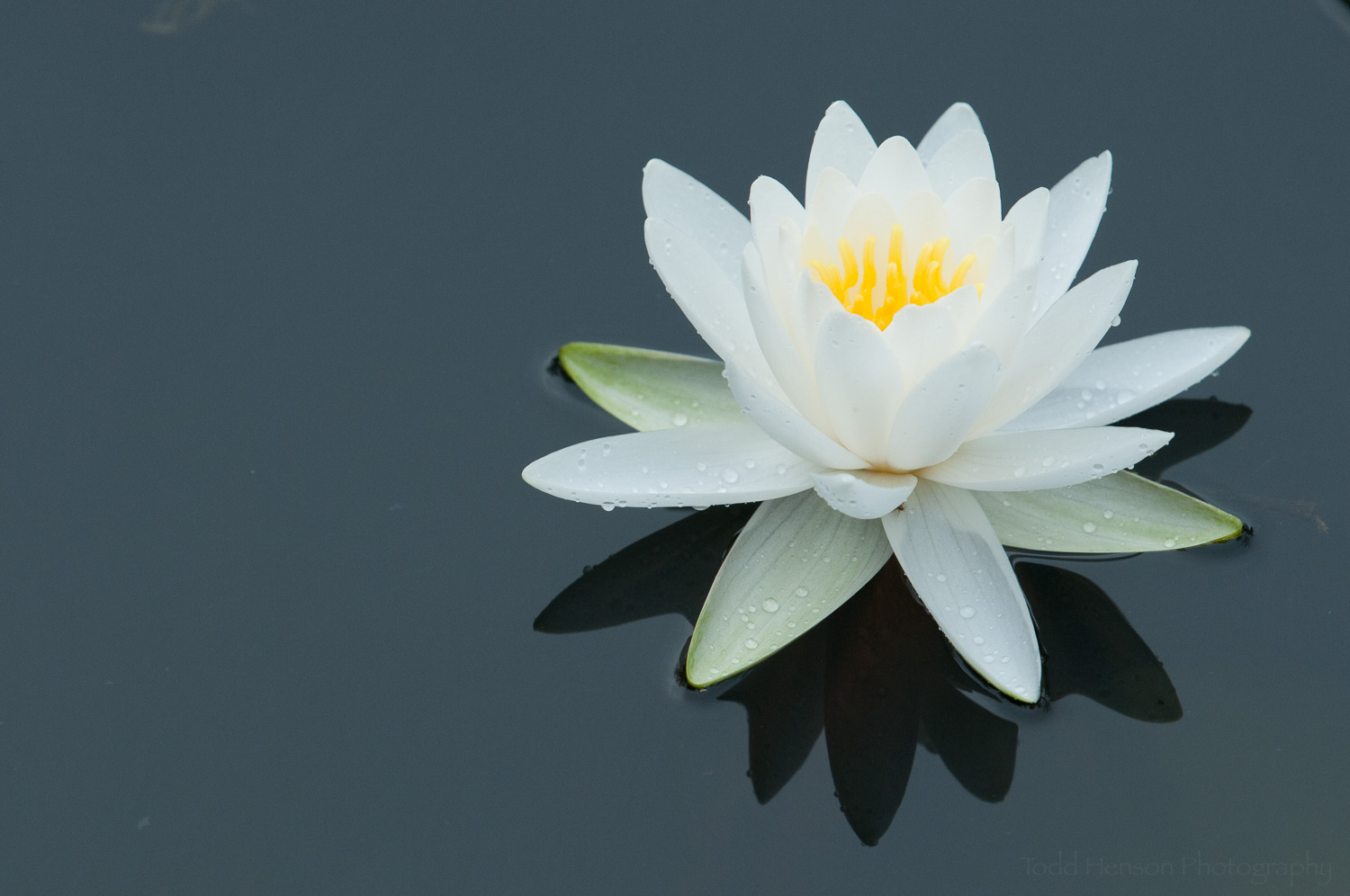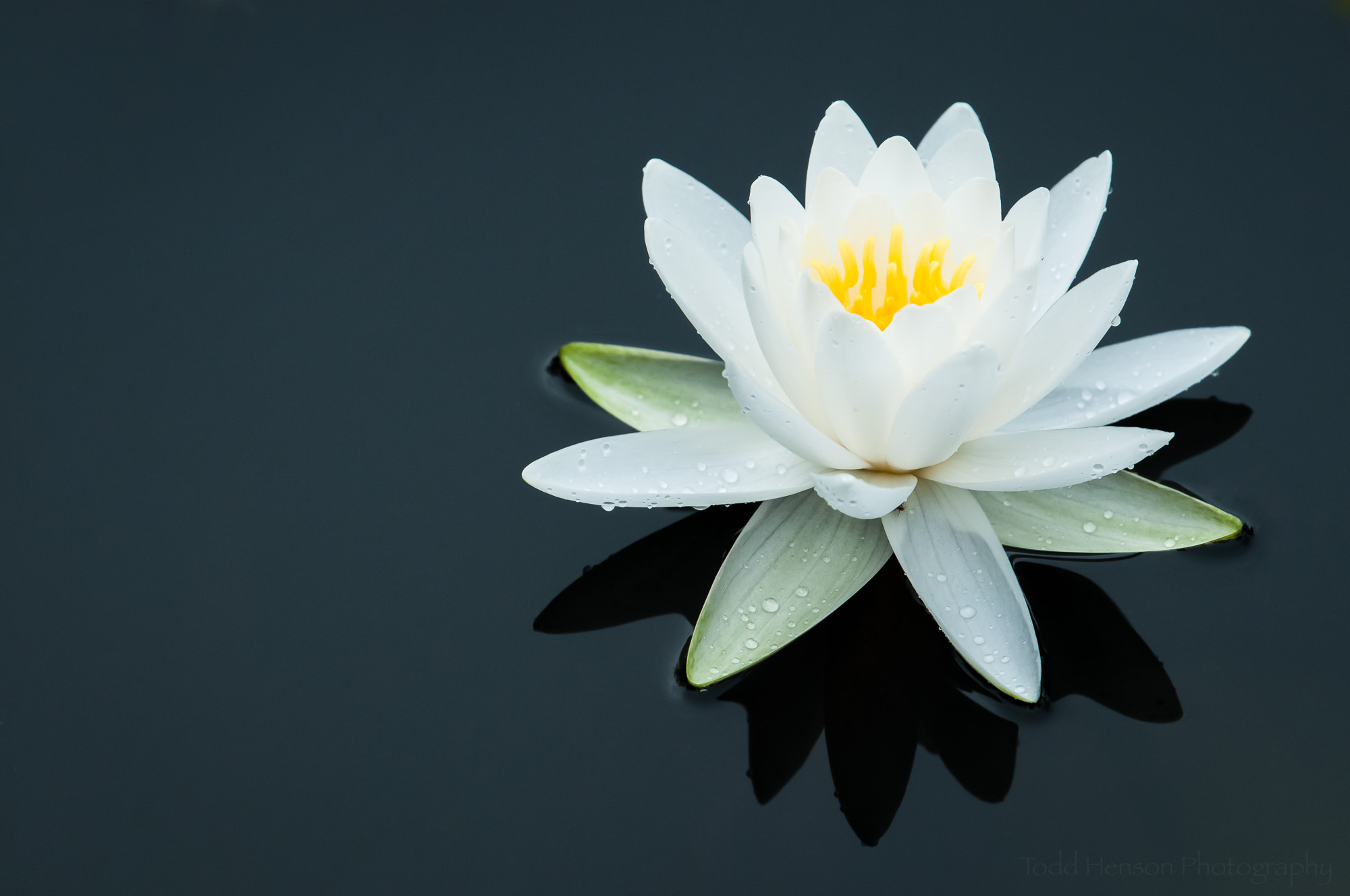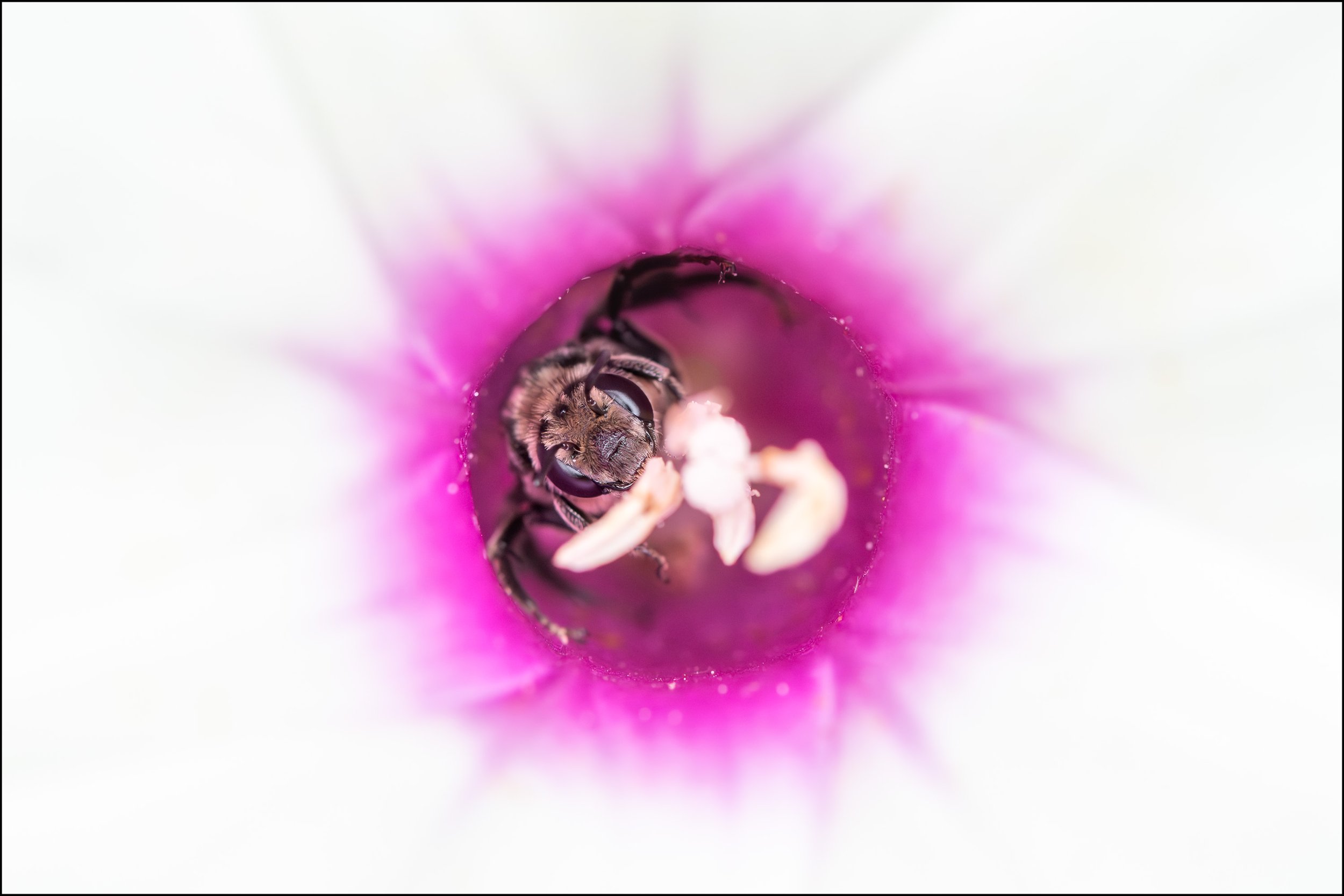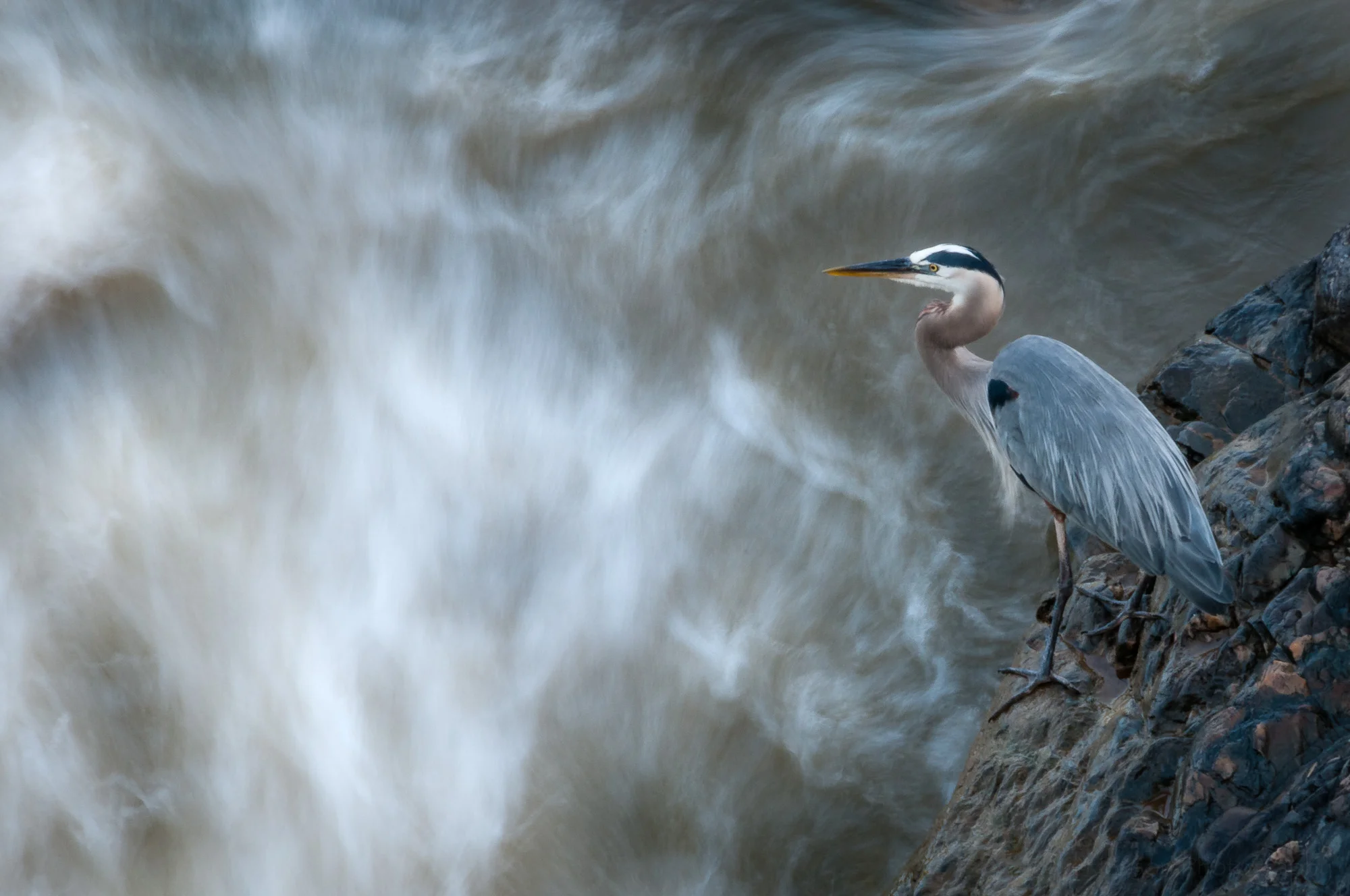White Water Lily - the final image
This white water lily image is my favorite photograph from a trip to Kenilworth Aquatic Gardens last year. There was light rain in the morning that covered all the flowers with rain drops, and the clouds acted as perfect soft boxes, providing beautiful soft light for white flowers. If it had been fully sunny there would have been far more contrast and far more risk of blowing out highlights and losing detail in the white petals. I felt the lighting was perfect for the subjects.
White Water Lily with ripples in pond
I walked around the ponds containing white water lilies, wanting to capture some images while the light was good. I tried a few shots while rain was falling, as seen above. I liked the ripples in the pond created by the rain. It added some nice patterns, and I thought the flower stood out well against the ripples. But I didn’t care as much for the composition. This particular water lily wasn’t appealing to me and I didn’t like the placement of the lily pads. So I kept walking around the ponds looking for other subjects.
White Water Lily surrounded by lily pads
The next water lily I found was growing at water level. I liked this. I liked how the lowest petals pushed against the water and created some texture. I liked the low angle, but would have liked a better view of the yellow center of the flower. And I was slightly distracted by the lily pad in the front, where a curl of the green overlapped one of the flower petals.
Less distracting White Water Lily, but still lacking something
I found another water lily raised above the water, like the first. I focused in more on the flower, with less distraction in the background. There were some lily pads in the background under the water, but these weren’t overly distracting, and I could lessen the distraction in post-processing. But the shape of the water lily wasn’t working for me. Nor was my placement of the flower dead center in the frame. Thankfully, there were many water lilies in the pond and lots of opportunities for creating different compositions. I moved on to the next one.
White Water Lily, getting closer to a composition I like
Now I was getting somewhere. I had a water lily growing at the surface of the water, with the bottom petals pushing against the water. I had a nice view of the yellow center of the flower. I had what I felt was a beautiful looking water lily. Unfortunately, my framing was off. The flower was dead center, which isn’t always bad, but didn’t seem to work in this case. And there was a distracting, unattractive bit of lily pad on the top right. But I had found the flower I wanted to photograph, I just needed a better composition, a better position to shoot from. So I repositioned myself and kept shooting.
White Water Lily. This is the composition I was looking for.
Now we get to the final composition, the one I was most pleased with. I’d repositioned myself such that I could eliminate any distracting lily pads, but was still able to view some of the nice yellow detail at the center of the flower. The light was great, the flower almost glowed. I checked the image on the camera LCD, then looked at the histogram to be sure I hadn’t blown out any highlights. Nothing was blown out, and no shadows were blocked up, so I’d captured all the detail I could. I make great use of the histogram in judging exposure. One glance and I know if I’m blowing highlights or blocking up shadows, neither of which is necessarily bad, but I want to be intentional in what I’m doing. I’m ok blowing highlights if I know I’m doing it, such as when photographing into the sun or at a shiny silver metallic surface. But in this case I did not want to lose any detail.
White Water Lily, the final edited photo.
When I got home I imported the photos into Lightroom and began the editing process. I don’t usually do a lot of post-processing. In this case the edits consisted mostly of tweaking exposure, highlights, and shadows, and cleaning up some of the distracting elements in the water. I lowered the exposure of the water, darkening it, to help draw attention to the flower. I made sure the flower was nice and white, not a dull grey. I also brought out details in the flower, especially the yellow center. I wanted the center to glow, just as it had when I saw it.
Looking back, I wish I’d tried some shots with greater depth of field (higher f-stop number). I would have liked to see more detail in the back petals. But I’m still very happy with the results. Below is a comparison of before and after. I hope you enjoy, and I hope this helps you in thinking, or feeling, your way through future shots. Keep your eyes open, look for distracting elements, be aware of composition, be aware of how the scene makes you feel. As David duChemin often writes about, shoot with intention, with purpose, with vision.
Below are the before and after images:


Do you enjoy these posts?
Sign up to receive periodic emails with updates and thoughts. Don’t worry, I won’t spam you. And please consider purchasing artwork or products from my online store, and using my affiliate links in the sidebar to the right when shopping online.
I appreciate your support!



























